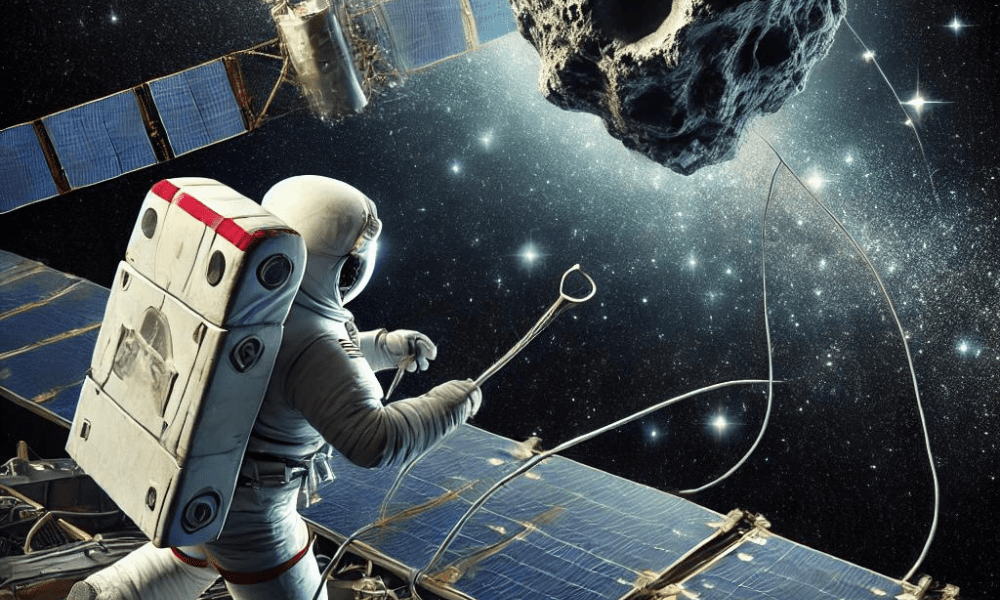The unique challenges facing space insurance

The unique challenges facing space insurance | Insurance Business America
Insurance News
The unique challenges facing space insurance
The ‘final frontier’ presents new threats – necessitating new risk strategies
Insurance News
By
Kenneth Araullo
The market for insuring satellites in orbit has evolved significantly over the years, but space remains a uniquely challenging environment for these operations. Satellites must endure extreme conditions, from intense solar radiation and vacuum exposure to temperature fluctuations ranging from minus 150°C to plus 200°C.
Despite careful engineering and testing, failures can still occur, highlighting the importance of space insurance as a critical risk mitigation tool for satellite operators, manufacturers, and financiers.
Russell Sawyer, satellite account executive at Lockton, notes that space insurance is essential given the substantial revenue that can be generated by communications satellites. A single satellite can bring in between $100 million and $200 million annually, and when multiplied across a fleet of 30 spacecraft, the potential financial impact is enormous.
This makes securing insurance to cover the operational lifespan of satellites a prudent investment.
While space insurance has seen continuous development, it is far from a new concept. The first space insurance policy was issued in 1965 for the Intelsat I satellite, covering third-party liability and pre-launch risks. Since then, the field has matured, adapting to meet the needs of satellite operators.
However, as Sawyer pointed out, two primary challenges continue to affect the market: the limited statistical data and the rapid pace of technological innovation.
The limited number of insurable satellites creates a much smaller statistical pool compared to other fields like aviation, where thousands of aircraft, such as Airbus A330s or Boeing 737s, are in operation. This smaller pool makes risk assessment more complex.
Additionally, while innovation is necessary in any engineering field, it can conflict with underwriters’ preference for equipment reliability based on established performance.
Sawyer said that these factors contribute to a volatile insurance market, where a few large claims can severely impact annual premium income. For instance, in 2023/24, claims exceeded premiums, causing rates to rise significantly. This volatility is an ongoing issue for the space insurance sector.
Inherently inaccessible
One of the inherent difficulties with satellites is the inaccessibility of their operating environment. Most communications satellites operate at 36,000 km above Earth, making it impossible to repair them directly if something goes wrong.
However, Sawyer said that recent technological advancements may offer solutions through in-orbit servicing (IOS).
Several space agencies and industry players are working on technologies to service satellites in orbit, with the aim of extending their operational lifetimes. Companies like Northrop Grumman and Astroscale have already demonstrated the ability to dock with and take control of malfunctioning satellites.
Other technologies in development include spacecraft capable of refueling satellites to extend their operational lives.
Sawyer also pointed to the potential of future space tugs equipped with robotic arms to perform repairs or replace faulty components. Many of these components could be produced in space using techniques like 3D printing, further reducing the need for a full replacement of the satellite. These advancements could normalize space insurance, making it more comparable to other types of insurance by reducing the high costs associated with satellite failures.
The hope within the space insurance community, according to Sawyer, is that in-orbit servicing will help to lower claims costs by enabling repairs instead of requiring claims for the full value of a satellite.
Replacing a large satellite can cost hundreds of millions of dollars, so reducing these costs could make the market less volatile and more attractive to insurers, thereby increasing market capacity.
Lockton’s space team, based in London, is closely monitoring these developments. Sawyer said that the team is also looking beyond current technologies, as the space industry continues to grow. The advent of commercial space stations in low Earth orbit, as well as planned missions to the Moon, could further expand the need for space insurance.
If lunar mining becomes a reality, it will require a network of communications and navigation satellites in lunar orbit, similar to those that currently orbit Earth, and these satellites will also need insurance.
The space insurance market, according to Sawyer, is accustomed to dealing with challenges. As the industry looks toward more ambitious projects, such as lunar exploration and mining, the role of space insurance will continue to evolve.
The next few years will likely test the resilience and adaptability of the market, but Lockton’s space team noted that it is preparing for the opportunities that lie ahead.
What are your thoughts on this story? Please feel free to share your comments below.
Related Stories
Keep up with the latest news and events
Join our mailing list, it’s free!






